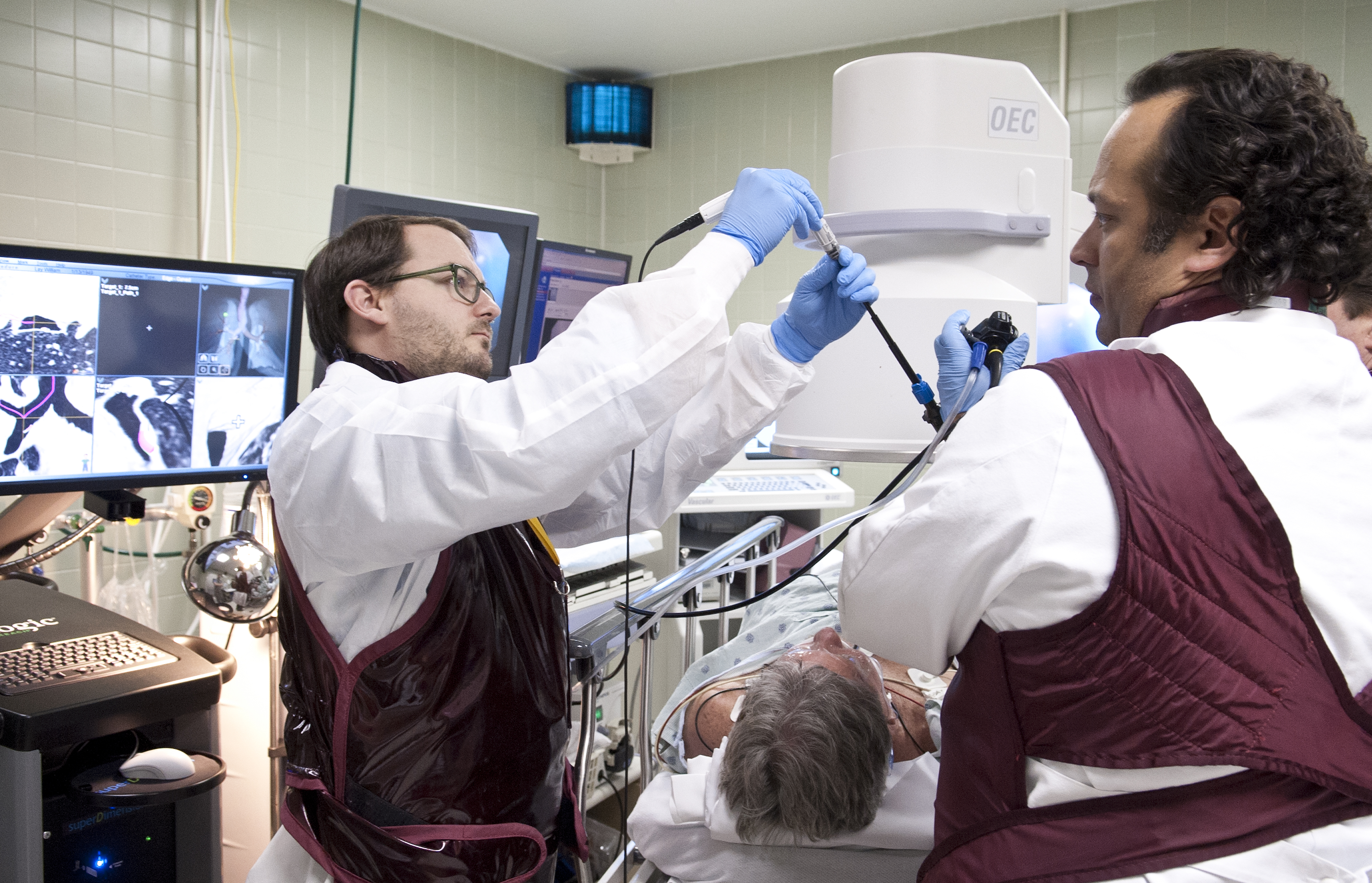New procedure at UMMC a boon for lung cancer detection

More lung cancer patients could be saved by a new diagnostic procedure available at the University of Mississippi Medical Center that “maps” the body’s airways with GPS-like technology
Electromagnetic navigation bronchoscopy (ENB), which debuted at UMMC in February, uses unique catheters that extend to parts of the lung beyond the reach of conventional bronchoscopy, according to Dr. Pierre de Delva, thoracic surgeon and assistant professor of surgery.

In Mississippi, the technology will be a valuable tool in the early detection, and treatment of, lung cancer, the No. 1 cause of cancer-related deaths in the U.S., as reported by the American Cancer Society.
“You can save a lot of lives,” de Delva said.
The technology is used in conjunction with a preliminary, low-dose computed tomography (CT) scan – a screening process soon to be covered by Medicare and commercial insurers for patients with certain risk factors for lung cancer.
About 20 percent of nodules discovered in the lungs are malignant, or cancerous. “If they’re diagnosed early enough, a cure is more likely,” de Delva said.
By comparison, a more traditional bronchoscope is limited in where it can go and what it can see; the more distant a nodule, or mass, is from the lung’s center, the larger it must be for detection.
That means it has been difficult to diagnose lung cancer in its early stage – “until now,” said Dr. Joe Pressler, UMMC pulmonologist and assistant professor of medicine.
“The new technology gives us a precise, turn-by-turn road map to get to the nodules we couldn’t get to before.”
It even enables physicians to root out some lung cancer or disease before symptoms pop up.
Early detection is vital: The five-year survival rate for lung cancer is about 53 percent when the disease is still localized (within the lungs), reports the American Lung Association. But for tumors that have spread to other organs, the rate is 3.5 percent.
Yet, only 15 percent of lung cancer patients are diagnosed at an early stage.

“Once the nodule is too big, it’s too late,” Pressler said. “Now, we don’t have to wait until it’s too late.”
Even for advanced-stage cancer patients, early diagnosis opens up more options for treatment, such as minimally-invasive surgery, de Delva said.
In February, William Lay of Jackson became only the third patient to be examined at UMMC with the new bronchoscopy technology. A patient of Pressler’s, Lay said a previous exam had detected a nodule in his lung.
By using navigational bronchoscopy to diagnose the anomaly, the physicians eliminated the need for surgery in order to perform a biopsy.
“They’re doing this instead of having to go through my chest,” said Lay, 65. “I’m happy with that.”
In contrast, invasive surgery often means a hospital stay and a greater likelihood of complications, including a collapsed lung – a particular risk for patients with emphysema.
“With less invasive treatments, there’s more optimism,” de Delva said.
The ENB procedure, which requires anesthesia and takes anywhere from 30 minutes to one hour, follows the discovery of a lesion by a CT scan in a distant part of the lung. It requires building an electromagnetic field around the patient.
Similar to a car’s Global Positioning System, the ENB uses the patient’s CT image to create a three-dimensional, virtual route through the lungs, enabling physicians to take tissue samples earlier and more safely than the traditional bronchoscopy to determine if the culprit is infection, inflammation or cancer.
This system also allows physicians to mark an area for surgery or radiation treatment; they can then treat the tumor with more targeted doses of radiation which lowers the risk to neighboring, healthy tissue.
Medicare is in the final stages of approving coverage for CT screenings and de Delva and Pressler predict that private insurers will follow Medicare’s lead. Increasing access to CT screening and having the appropriate tools and expertise to interpret the results is expected to decrease the number of Mississippians who die from lung cancer each year.
“We can be more reassuring about the patient’s future,” Pressler said. “We’re giving them a much better chance.”
To schedule an appointment or for more information about an electromagnetic navigation bronchoscopy, lung cancer screening and the comprehensive lung cancer program at UMMC, call Leigh Ann Lamm at 601-984-5691.


